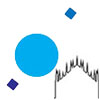The purpose of the Astronomical Software Group is to provide the astronomical community with software packages useful for data reduction and analysis, with particular emphasis towards applications connected with Multi-Object Spectrographs, and databases/catalogs handling for large Observational Cosmology surveys.
Among the distributed software packages, it is worth mentioning explicitly:
- VIPGI (VIMOS data reduction software): developed initially as a contractual delivery to ESO, it has been adopted as the reduction software within the VVDS, VUDS, zCOSMOS, VIPERS and VANDELS projects. From June 2005 to December 2010, VIPGI has been distributed to the whole astronomical community.
- EZ: an automatic redshift measurement tool. Fundamental to carry out the VVDS, zCosmos, VIPERS and VANDELS surveys, it is now world-wide distributed on demand.
- SAMPy: a Python module developed within the framework of the Italian Virtual Observatory, which allows Python scripts to communicate with any exiting VO compliant application (i.e. TOPCAT, Aladin, VOSpec, DS9), on one side, and with Python libraries on the other side. Originally born as stand-alone module, SAMPy has been now endorsed by the AstroPy project.

Other important on-going activities include:
- EasyLife: a software infrastructure built around the VIPGI data reduction recipes to automatize as much as possible the process of data handling for large survey projects. This package currently provides all the data handling facilities for the VIPERS and VANDELS surveys.
- iModel: this is a tool developed for the performance evaluation of the slitless spectrograph NISP of the EUCLID satellite. It performs a full end-to-end simulation, starting from a set of parameters that describe the instrumental configuration, then simulating and reducing the observations and, finally, measuring the redshifts for the extracted spectra. It has been used to study and compare the various opto-mechanical configurations of the proposed instruments to evaluate the best one according to the scientific targets of the missions. The simulated data produced are also used as inputs for the development and testing of the reduction and analysis pipelines.
- LBT spectrograph pipelines: building on the VIMOS experience, we have developed the reduction pipelines for the MODS and LUCI spectrographs at the LBT. As a service to the italian community, we routinely reduce all the LBT italian observations carried out with one of these two instruments and distribute fully calibrated 1D extracted spectra to the proposal PI.
- DART: Configurable web interface to astronomical databases, provides support also for Cone Search, SIA and SSA VO protocols. It is currently used to publish through Web the XMM-LSS (XMM Large Scale Structure Survey) database, and to support the databases for the VVDS-Sinfoni ESO Large Program MASSIV (access restricted to participants only), the VIMOS ESO Large Program VIPERS, the VANDELS survey and the XMM-Newton ESA Large Program XMM-LSS, plus the institute-internal version of the zCosmos and VVDS databases.
- GOSSIP: spectro-photometric analysis of galaxies through SED fitting. It is a tool to build up galaxy SEDs from observed data (making use of both photometric and spectroscopic information), and then compare the observed SED to those derived from theoretical models, in order to find the fundamental physical parameters of galaxies (like mass, age, Star Formation rate, metallicity, etc). It can use different sets of models (e.g. BC03 or Pegase) and can be used interactively or in batch mode.
